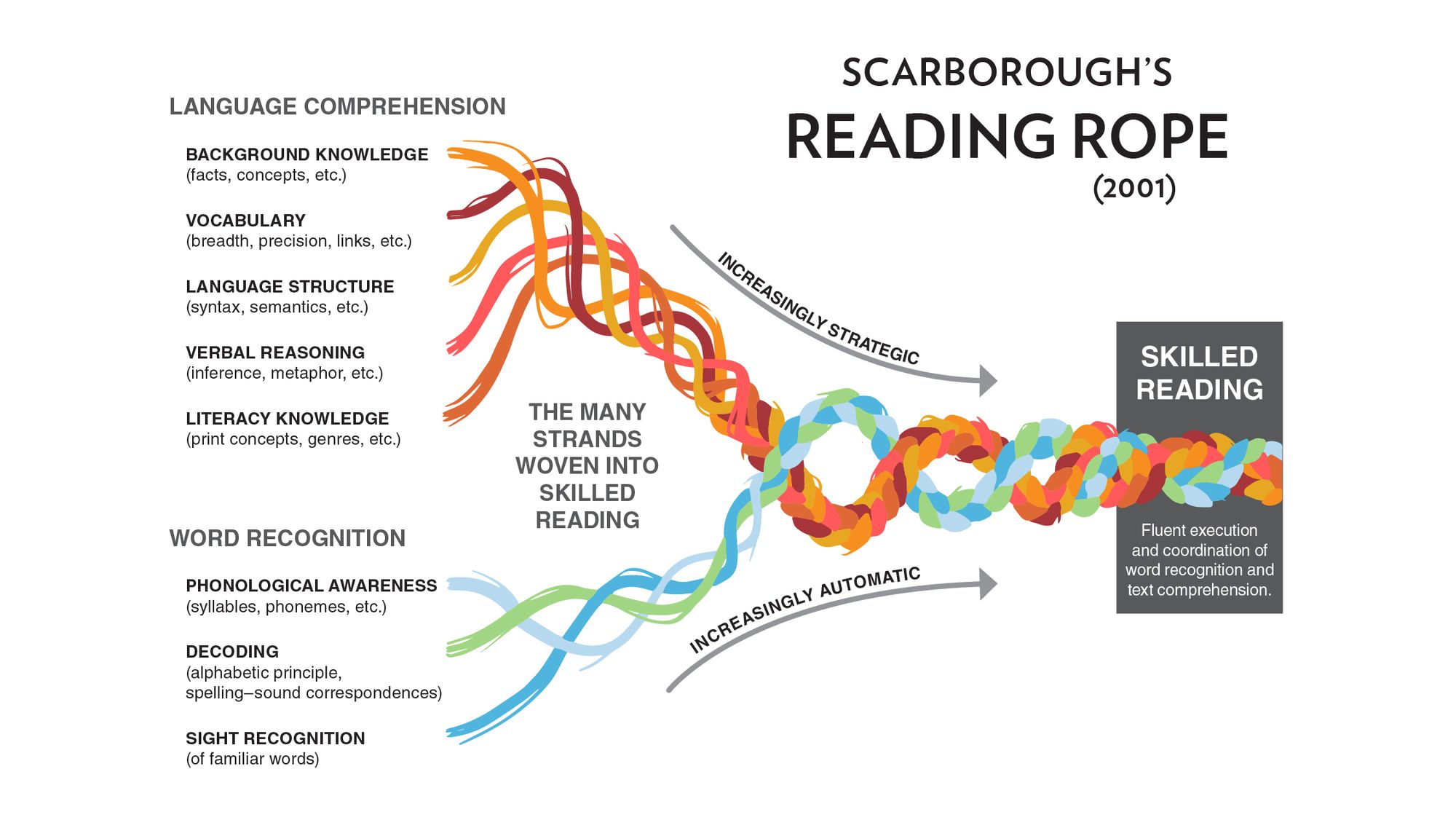Scarborough's Reading Rope

I like this metaphor to help break down the pieces that go into developing strong reading skills. The Scarborough reading rope model has been in use for about 20 years, if you’re interested in the research backing it up, search for “Scarborough reading rope.”
The cool-toned threads at the bottom are what you might consider “learning to read”—the basic mechanics of word recognition. The warm-toned threads are about making sense of what you’re reading, language comprehension. As the word recognition skills develop, you’re able to do them without thinking, freeing the brain to think more fully and deeply about what’s being read—finding meaning, insight, connections, understanding, all the good stuff!—through the language comprehension skills.
Building reading skills works best when all of these skills are being developed. Any single thread being underdeveloped can hamper the ability to construct full meaning.

In this graphic, I’ve marked how Wanda and I have approached each of these threads.
Wanda was one of the 20% of kids who’ll teach themselves to read, so she tackled much of the word recognition herself (purple W). I supplemented by teaching her phonics with the Logic of English curriculum (green LOE, more about that here). I did that more for spelling/writing than for reading, but it might be helping to decode some more unusual words.
For language comprehension, nothing beats just reading a lot (A LOT A LOT!), and talking about it together (red R). Wanda does plenty of independent reading, but my focus here is the reading we do together, with me reading aloud to her. My reading aloud frees her brain to work on these comprehension skills, and presents endless opportunities to pause and talk about meaning: word meaning, figures of speech, the choices an author is making, and most of all, what we are thinking ourselves. The supplement I use here is the Michael Clay Thompson language arts curriculum (blue MCT, more about that here and here). MCT has turbo-charged her skills, particularly when it comes to vocabulary and language structure. The language structure skill will get more use when we’re learning about writing rather than reading, but I’ve seen her use it to deconstruct advanced reading passages to detect meaning.
Perhaps the most important thread here is one that gets forgotten, taken for granted: background knowledge. Simply put, the more general “stuff” you know about, the better chance you’ll have of understanding what you encounter in your future reading. This is where every other subject comes in: science, geography, history, art, music, culture, civics, you name it. Well-rounded exposure, and some special attention paid to the kinds of references that come up often, go a LONG way to building a strong reader. (Nota bene: It doesn’t have to come through reading; however you got the knowledge, you’ve got it, and that’s what counts.)
Once you start thinking about developing reading skills in this way, it becomes easier to see how different resources play their roles in strengthening the individual skills. For instance, many parents are wary of comic books or audiobooks, while experienced reading teachers actually recommend them.

